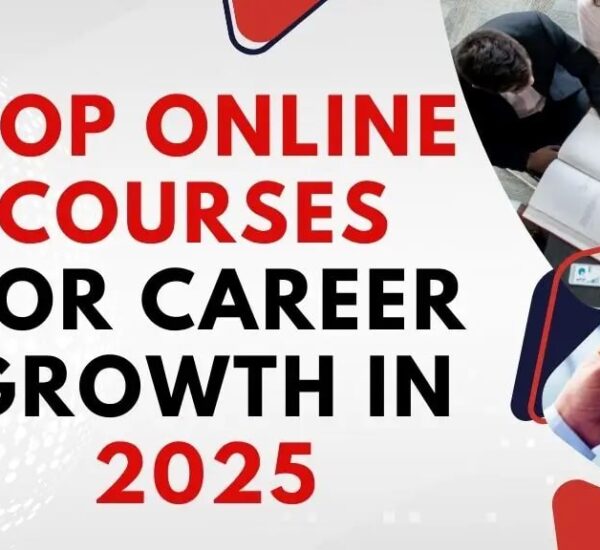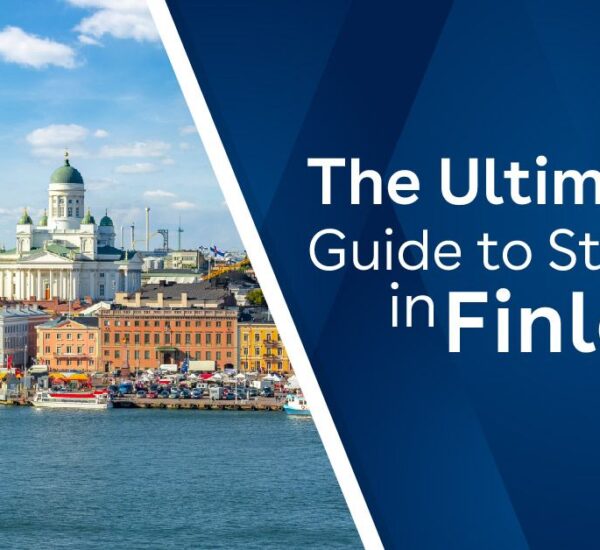Crafting an effective CV or Resume is essential for any student applying to universities abroad. Your CV is often the first impression you make on admissions committees, showcasing your academic achievements, professional experiences, and personal qualities. In highly competitive contexts—whether in the USA or Europe—a polished, comprehensive CV can set you apart from thousands of applicants.
This guide will walk you through every step of creating an exceptional CV/Resume for International Students seeking undergraduate, graduate, or exchange programs. We’ll cover essential sections, formatting tips, common pitfalls, and advanced strategies to maximize your chances of acceptance.
1. Why a Great CV/Resume Matters for Study Abroad
First Impression: Admissions officers often skim dozens—or hundreds—of applications. A clear, concise CV can capture their attention immediately.
Holistic Profile: Beyond grades, universities seek well‑rounded candidates with leadership, innovation, and cross‑cultural skills. Your CV showcases these qualities.
Competitive Edge: Top programs in the USA (e.g., Ivy League) and Europe (e.g., Oxbridge) admit only a fraction of applicants. A superior CV can tip the balance in your favor.
Interview Gateway: A strong CV often leads to interview invitations, the final hurdle in securing admission or scholarships.
2. Choose the Right Format for Your CV/Resume
There are three main CV formats. Select one that best aligns with your background:
Chronological Format
Structure: Lists experiences in reverse‑chronological order (most recent first).
Best for: Applicants with clear, relevant work or research history.
Sections: Header → Objective/Summary → Education → Experience → Skills → Additional Sections.
Functional Format
Structure: Emphasizes key skills and achievements over dates.
Best for: First‑year university applicants or those with minimal work history but strong competencies.
Sections: Header → Objective/Summary → Core Competencies → Projects/Activities → Education → Additional Sections.
Hybrid (Combination) Format
Structure: Blends chronological and functional styles—highlighting skills followed by a concise experience timeline.
Best for: Well‑rounded applicants with both robust skill sets and relevant experiences.
Sections: Header → Objective/Summary → Key Skills → Experience → Education → Additional Sections.
Pro Tip: For most USA universities, the chronological format is preferred. In Europe, a hybrid format can emphasize both your technical capabilities and your timeline of accomplishments.
3. Craft a Clear, Professional Header
Your CV’s header should present your contact details in a single, easy‑to‑read line:
**[Your Full Name]**
City, State/Country • +[Country Code]‑[Phone Number]
[[email protected]] • LinkedIn: linkedin.com/in/yourprofile
Portfolio: yourportfolio.com (if applicable)
- Bold your name and use a larger font (16–18 pt) than the rest (10–12 pt).
- Include a professional email (avoid nicknames).
- Add links to your LinkedIn, GitHub, or personal website if relevant to your field.
4. Write a Targeted Objective or Professional Summary
Your Objective or Summary (1–2 sentences) should:
- State your current level (e.g., “High school senior with a 4.0 GPA”).
- Highlight your strengths (e.g., “proficient in data analysis and machine learning”).
- Specify your goal (e.g., “seeking admission to the B.Sc. in Computer Science at MIT to advance AI research”).
Example – USA Objective:
Objective:
High‑achieving high school senior (GPA 4.0) with leadership as Robotics Club President and advanced programming skills in Python and C++. Seeking admission to the undergraduate Computer Science program at Stanford University to innovate in autonomous vehicle technology.
Example – Europe Objective:
Objective:
Recent International Baccalaureate graduate (45 points) fluent in French and English. Aiming for the B.A. in International Relations at Sciences Po Paris to contribute to global policy research and diplomacy.
5. Detail Your Education Section
As an International Student, your academic record is paramount:
**Education**
[High School / University Name], City, Country
**Diploma**: International Baccalaureate (IB) / A‑Levels / High School Diploma
Graduation: Month Year • GPA: 4.0/4.0 (Top 5%)
Relevant Courses: AP Calculus, IB Physics, Economics HL
Honors: National Merit Scholar, Mathematics Olympiad Gold Medal
Include standardized test scores if required (SAT: 1560, ACT: 35, GRE, GMAT).
Highlight university coursework for graduate applicants (e.g., “B.Sc. in Biology, Thesis: CRISPR gene editing”).
For Europe, specify local qualifications (e.g., Abitur, Baccalauréat) and any language certifications (DELE, DELF, TestDaF).
6. Showcase Experience & Extracurriculars
“Experience” includes more than paid roles:
- Internships (e.g., lab assistant, software development intern)
- Research (e.g., summer research fellowship)
- Volunteering (e.g., hospital volunteer, NGO projects)
- Leadership (e.g., Student Council President, sports captain)
- Creative Works (e.g., art exhibitions, performances)
Write Achievement Statements with SAR Format
- Situation: Context of your role.
- Action: What you did.
- Result: What you achieved, quantified if possible.
Example – Europe Project:
**Research Intern** | Jun 2022–Aug 2022
Max Planck Institute for Evolutionary Biology, Plön, Germany
- Conducted CRISPR‑Cas9 gene‑editing experiments on *Drosophila* embryos.
- Optimized guide RNA design, increasing editing efficiency by 30%.
- Co‑authored a paper submitted to *Nature Communications*.
Remember: Use action verbs—led, designed, managed, achieved, created.
7. Highlight Your Core Skills
List 6–8 skills, tailored to your target program. Mix hard and soft skills:
- Technical Skills:
- Programming: Python, Java, C++
- Data Analysis: R, MATLAB, Tableau
- Design: AutoCAD, Adobe Creative Suite
- Languages: English (C2), French (B2), Spanish (B1)
- Soft Skills:
- Leadership & Teamwork
- Problem‑Solving & Critical Thinking
- Time Management
- Cross‑Cultural Communication
8. Add Optional Sections to Stand Out
Use these selectively to strengthen your application:
- Research & Publications (e.g., co‑authored journal articles)
- Certifications (e.g., Coursera Deep Learning Specialization, DELE C1)
- Awards & Honors (e.g., Fulbright Scholar, Rhodes Scholarship finalist)
- Projects & Portfolios (links to GitHub, Behance)
- Professional Affiliations (e.g., IEEE Student Member)
- Volunteering & Community Service (e.g., UNICEF Youth Ambassador)
Tip: Keep each section concise—no more than 3–5 bullet points.
9. Format for Readability & ATS
Consistent Headings: “Education”, “Work Experience”, “Skills”.
Standard Fonts: Use professional fonts (Arial, Calibri, Times New Roman).
No Graphics: ATS software may not parse images or tables.
PDF Submission: Preserve formatting, unless the university requests a Word document.
10. Proofread & Finalize
Consistency: Uniform date formats, font sizes, bullet styles.
Clarity: Short bullet points—avoid dense paragraphs.
Accuracy: No typos, spelling errors, or grammatical mistakes.
Feedback: Seek reviews from teachers, mentors, or a writing center.
11. Sample International Study CV/Resume Template
**JESSICA LEE**
London, UK • +44‑7700‑900123 • [email protected]
LinkedIn: linkedin.com/in/jessicalee • Portfolio: jessicalee.dev
---
**OBJECTIVE**
Top IB graduate (45 points) fluent in English and Japanese. Seeking the **B.Sc. in Computer Science** at **Imperial College London** to advance **AI** and **robotics** research, leveraging prior internship at Sony AI Labs.
---
**EDUCATION**
**International Baccalaureate Diploma**, Westminster School, London, UK
Graduation: Jul 2023 • Score: 45/45 (Top 1%)
- Higher Level: Mathematics, Physics, Computer Science
- Awards: IB Global Top Scorer, UK Mathematics Trust Gold Medal
---
**RESEARCH & PROJECTS**
**AI Research Intern** | Jun 2022–Aug 2022
Sony AI Labs, Tokyo, Japan
- Developed CNN models for object detection in urban driving scenarios.
- Achieved 88% mAP on Cityscapes dataset; codebase shared on GitHub.
- Presented findings at IEEE International Conference on Robotics and Automation.
**Independent Robotics Project** (Sep 2021–May 2022)
- Built an autonomous delivery drone using ROS and LIDAR sensors.
- Integrated SLAM algorithm for real‑time navigation in indoor environments.
---
**EXPERIENCE**
**President, Coding Club** | Sep 2021–Present
Westminster School, London
- Organized weekly workshops with 50+ members, teaching Python and web development.
- Led team to victory in the UK National Hackathon (2022), earning £5,000 grant.
**Math Tutor** | Jun 2020–Aug 2021
Private Tutoring, London
- Delivered one‑on‑one sessions in calculus and statistics; average student grades improved by 25%.
---
**SKILLS**
**Programming:** Python, C++, Java, ROS
**Data Analysis:** MATLAB, R, TensorFlow
**Languages:** English (C2), Japanese (B2), Spanish (B1)
**Soft Skills:** Leadership, Problem‑solving, Adaptability, Collaboration
---
**CERTIFICATIONS & AWARDS**
- Coursera: Deep Learning Specialization (Andrew Ng)
- DELE B2—Spanish (Instituto Cervantes)
- Recipient, UK National STEM Scholarship (2021)
---
**VOLUNTEER & COMMUNITY SERVICE**
- UNICEF Youth Ambassador (2022–Present)
- Organizer, London Code4Good Hackathon (2022)
---
**REFERENCES**
Available upon request
Final Thoughts
A well‑crafted CV/Resume is your ticket to study in the USA, Europe, or any global academic hub. By selecting the right format, emphasizing your education, experience, and skills, and aligning with program‑specific keywords, you’ll present a compelling profile that admissions officers can’t overlook. Start early, refine continuously, and seek constructive feedback. Best of luck with your study abroad journey!
Ready to take the next step? Tailor this template to your story and apply with confidence!


